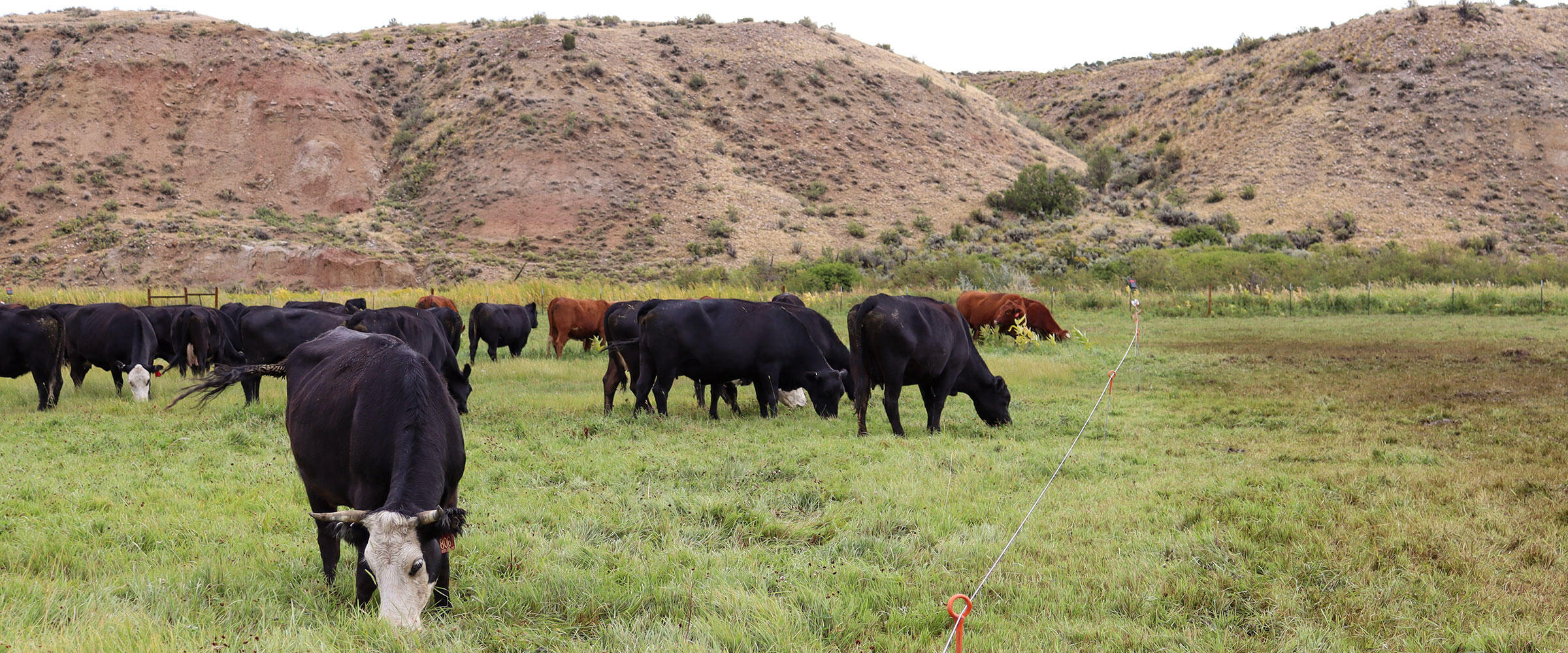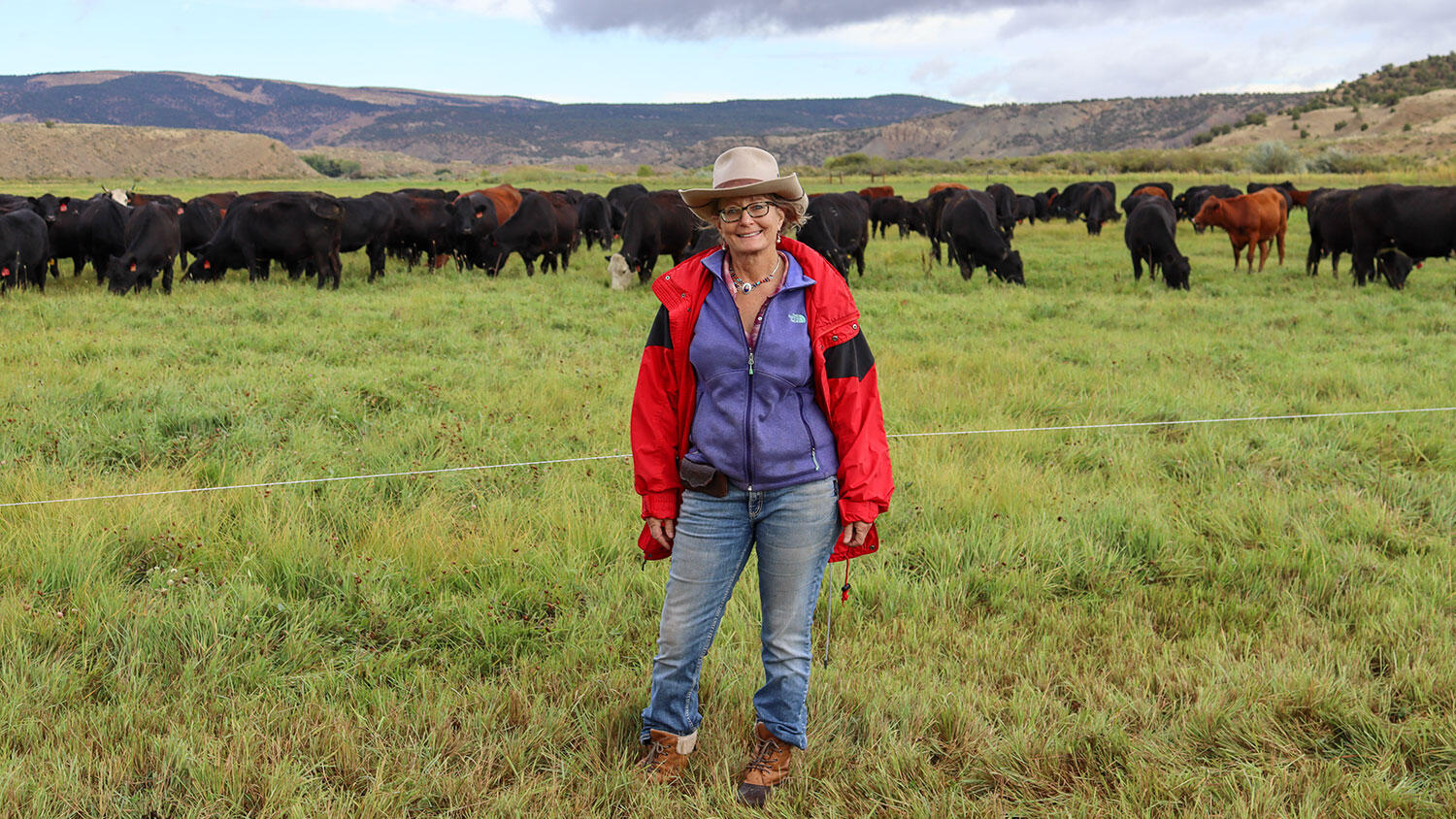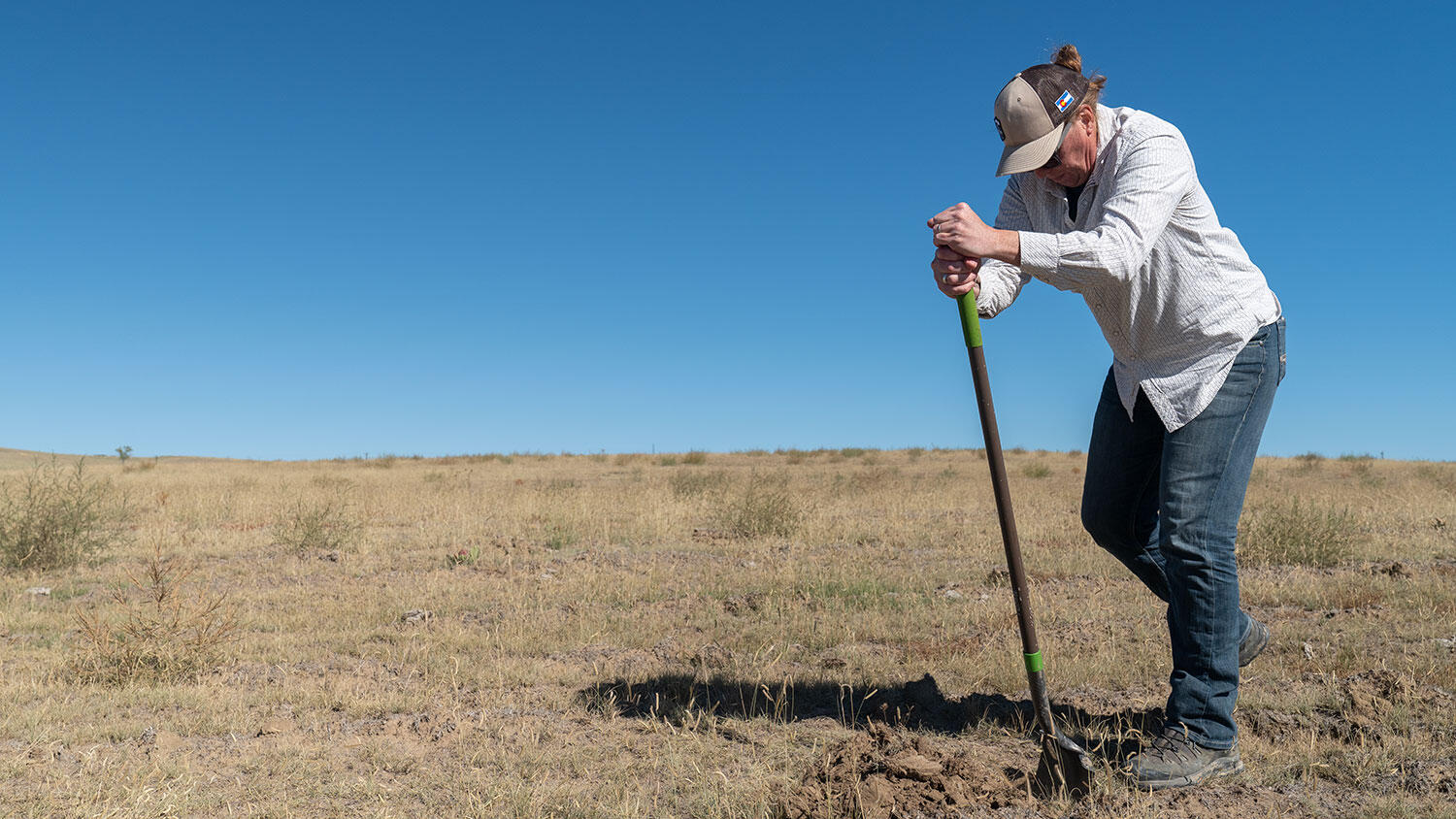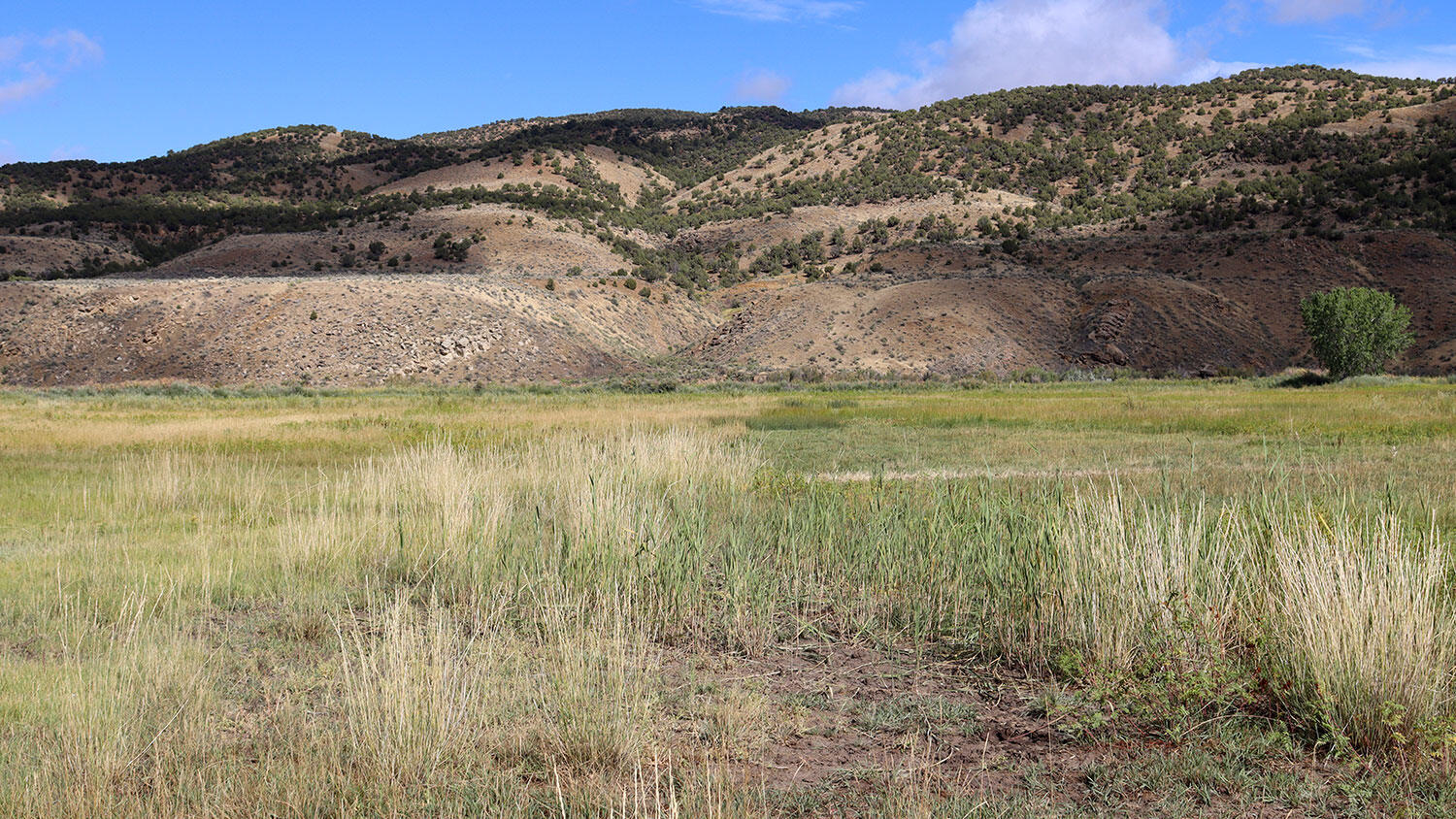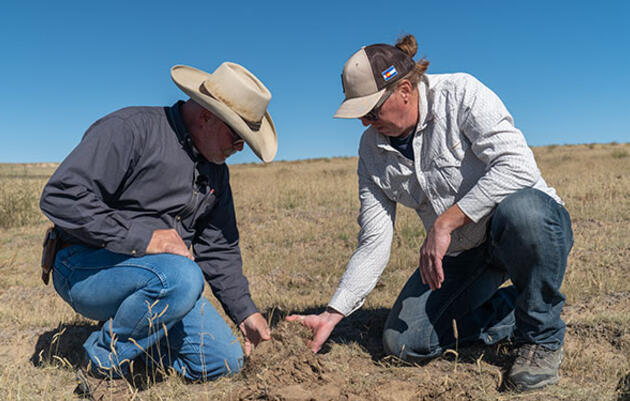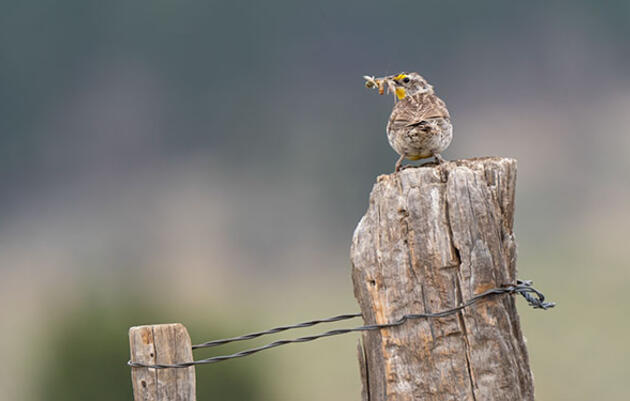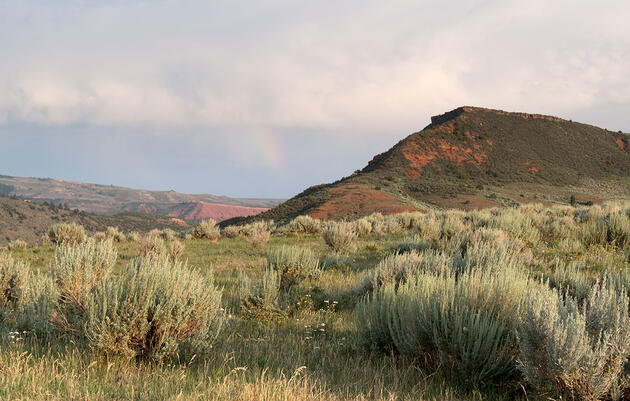The Herd Below the Ground
With seven miles of wet meadows along the White River bordered by vast swaths of high desert, 4M Ranch encompasses an expansive home for cattle and a diversity of wildlife. The natural richness has made the area a productive site for ranching in northwest Colorado since the mid-1800s and a home for the Ute people for millennia before that.
Deirdre Macnab, owner of 4M Ranch, honors that history but also recognizes a need to adapt to the future. In her early years of owning the ranch, she says she started out with the “traditional approach” of keeping cattle in the uplands during the summer, harvesting hay from the wet meadows, and using chemical fertilizers and herbicides to maximize grass production.
Three years ago, Macnab decided to switch to a more regenerative approach. She learned that by weaning her ranch off of chemicals and heavy machinery, she could decrease her ranch’s costs and thereby increase its profitability—and the health of the land. The way she sees it, what she’s implementing is an even more traditional form of ranching, one that existed long before chemical fertilizers.
“Fertilizer is like crack cocaine for grass,” said Macnab. “The first year you don’t use it, your grass looks yellow like it’s going to die off.” By discontinuing haying as well, she’s allowed the soil to hold much more water. Over time, she’s rehabilitating the wet meadows to the “lush green repository for wildlife and cattle” that they once were.
As part of this transition, her focus has shifted from grass production to soil health. “What we’re really focused on is the herd below the ground, and that’s the microbes,” she explains. “If we take care of them, they’re gonna take care of what’s above ground,” and that leads to healthier cattle, increased profit, and more wildlife.
Despite the benefits, it can still be hard for ranchers to radically change their management. “A lot of people said, ‘Boy, you’re making a big mistake because your hay won’t be tall enough to cut,’” said Macnab. According to her, one of the biggest barriers to change is a disbelief that practices from other places could work there. “There’s kind of a ‘show-me’ attitude.”
So Macnab set out to show them.
An Incentive to Experiment
Last year, Macnab received an email from Dusty Downey, Audubon Rockies’ Conservation Ranching manager. He was asking if Macnab would be interested in participating in a new Colorado Department of Agriculture program called STAR Plus, which stands for “Saving Tomorrow’s Agricultural Resources.”
By participating, Downey explained, 4M Ranch would set aside at least 100 acres to test a new management strategy. Over the next three years, Audubon Rockies’ staff would measure various soil metrics in the experimental pasture and compare it to the soil outside of it. In doing so, 4M Ranch would receive $5,000 to offset the costs of altering their management. Also, they’d be helping test and improve new management strategies that they could potentially adopt across the ranch if successful.
In short, Macnab would get scientific data to help make the soil healthier. “It was exactly in step with what we’re trying to accomplish at this ranch,” she said.
Along with 4M Ranch, Downey and Aaron Maier, Audubon Rockies' range ecologist, helped the Colorado Department of Agriculture recruit six other Audubon-certified ranches in Colorado for the STAR Plus program, providing a total of $35,000 in incentive payments. On other ranches, the funds went towards projects like installing fencing or water pipelines needed to better manage cattle, moving calving grounds to allow degraded pasture to rest, or writing new grazing plans. Across the plans, the purpose was the same: find ways to improve soil health. After planning was complete, Maier collected baseline soil data on each of the ranches.
Today, for Tomorrow
In the coming years, the STAR Plus participants will receive a rating that they can use “to evaluate their current production system, identify areas for improvement, document their progress, and share their successes,” according to the STAR website.
"The Colorado Department is so encouraged to have partners like Audubon Rockies working with ranch families like the Macnabs to grow above and below-ground habitats, increase valuable bird diversity, and ranch profitability,” said Cindy Lair, Colorado State Conservation Board manager for the Colorado Department of Agriculture. “Our first year was a success because of the great relationship Dusty's team and our conservation districts foster with livestock and crop producers in Colorado and throughout the Rockies. Because of them, the STAR Soil Health program is off to a great start and we look forward to helping support local soil health programs throughout the West."
The STAR acronym, “Saving Tomorrow’s Agricultural Resources,” resonated strongly with Macnab. “This method of ranching is saving our water and soil for future generations,” she said. “Ranchers care a lot about that.” She referenced a study that found that young people are reluctant to take on their families’ ranches because of how financially draining it can be.
Increasing profitability is key to reversing that trend, and being a good steward of the land goes hand-in-hand with profitability, according to Macnab. “I just returned from a Ranching for Profit seminar and numerous families shared their difficulties in trying to run a profitable business with the changing climate and diminishing water resources. The exciting message from the seminar…was that holistic, or healthy management was also a more profitable alternative for the producer and healthier for the environment.”
While today’s ranchers face a long list of environmental and economic challenges, addressing them often starts by improving the health of the land. “We have an extraordinary wild world out here. I want to do everything we can to restore it to its natural abundance,” said Macnab.

